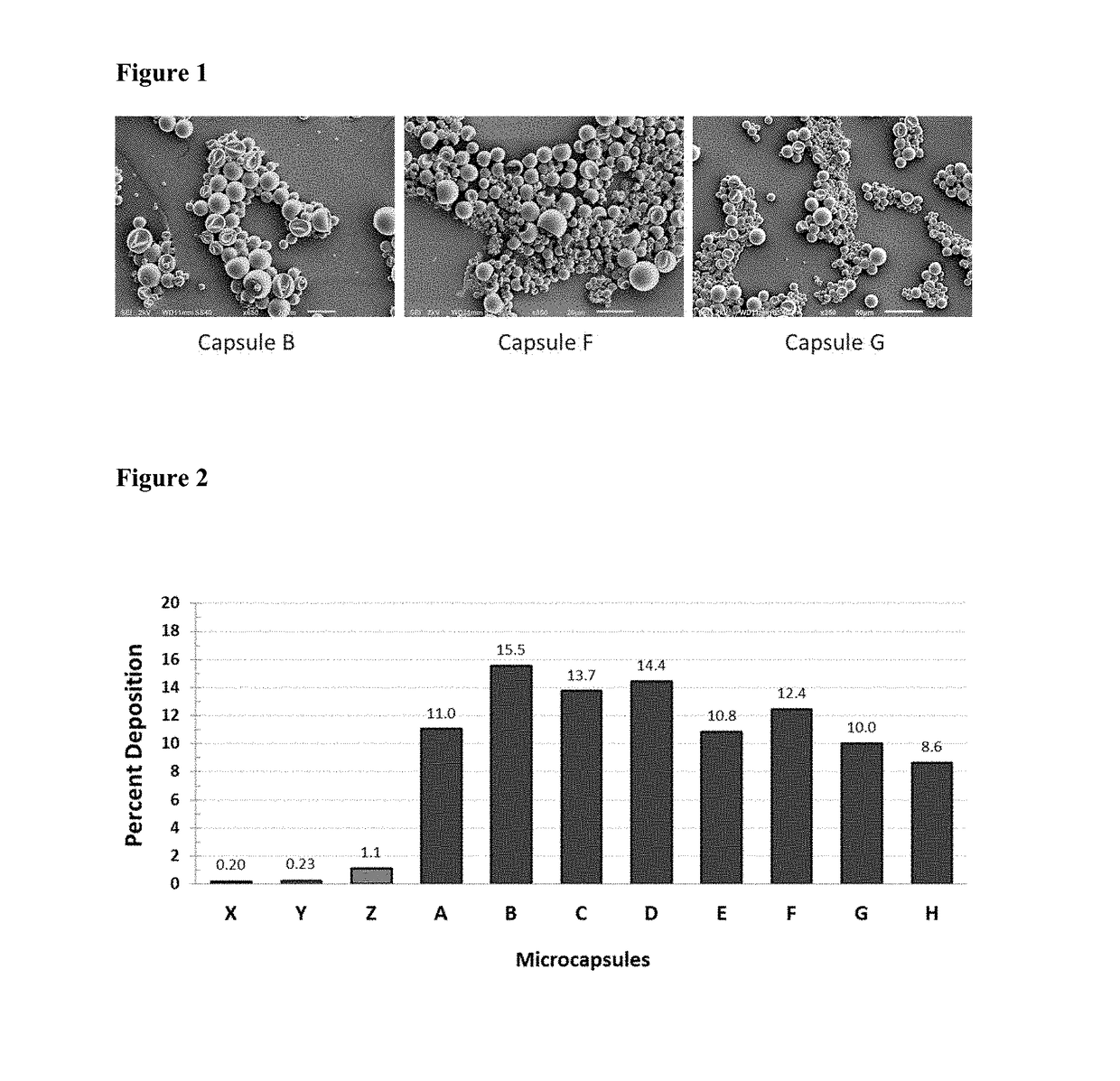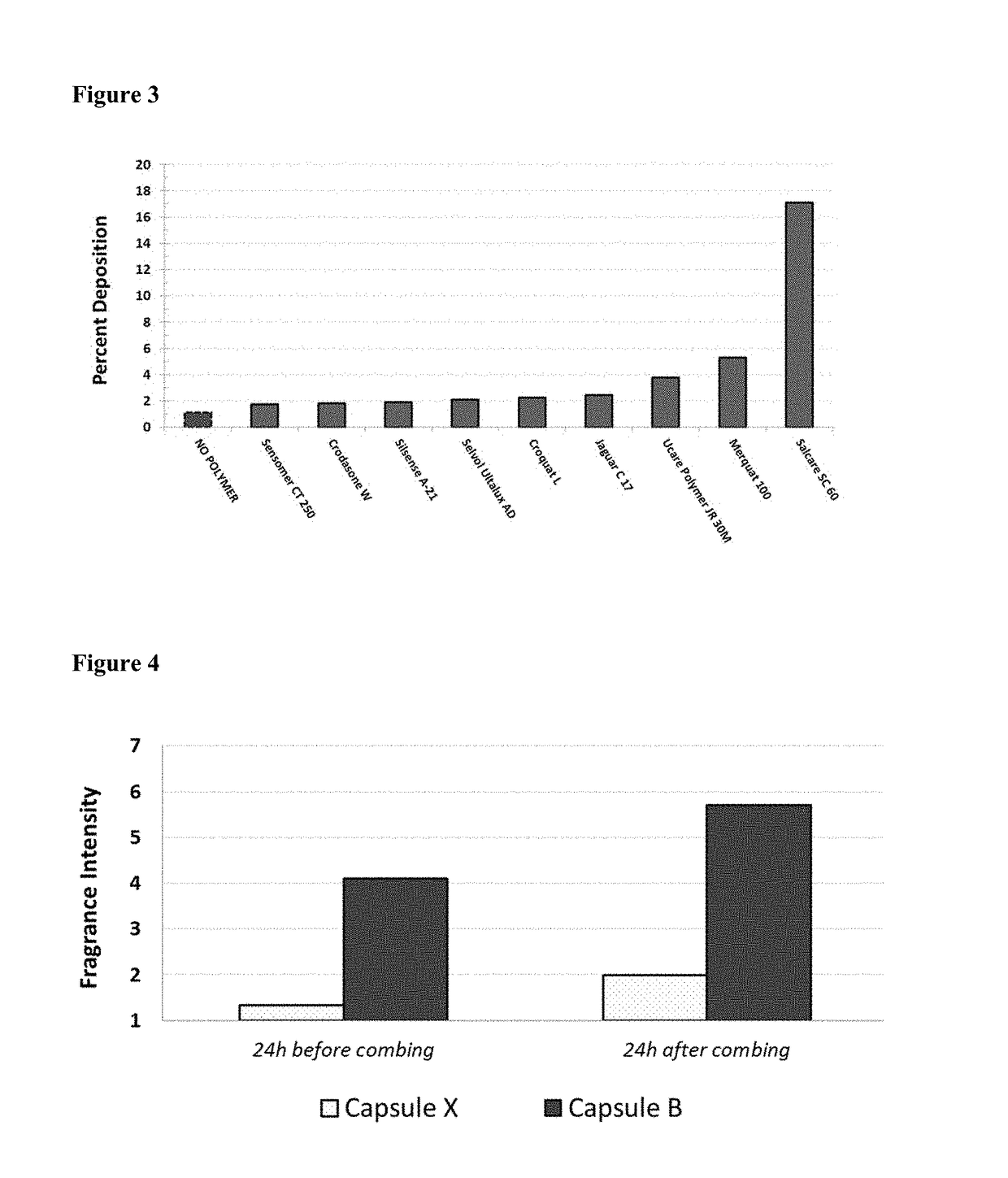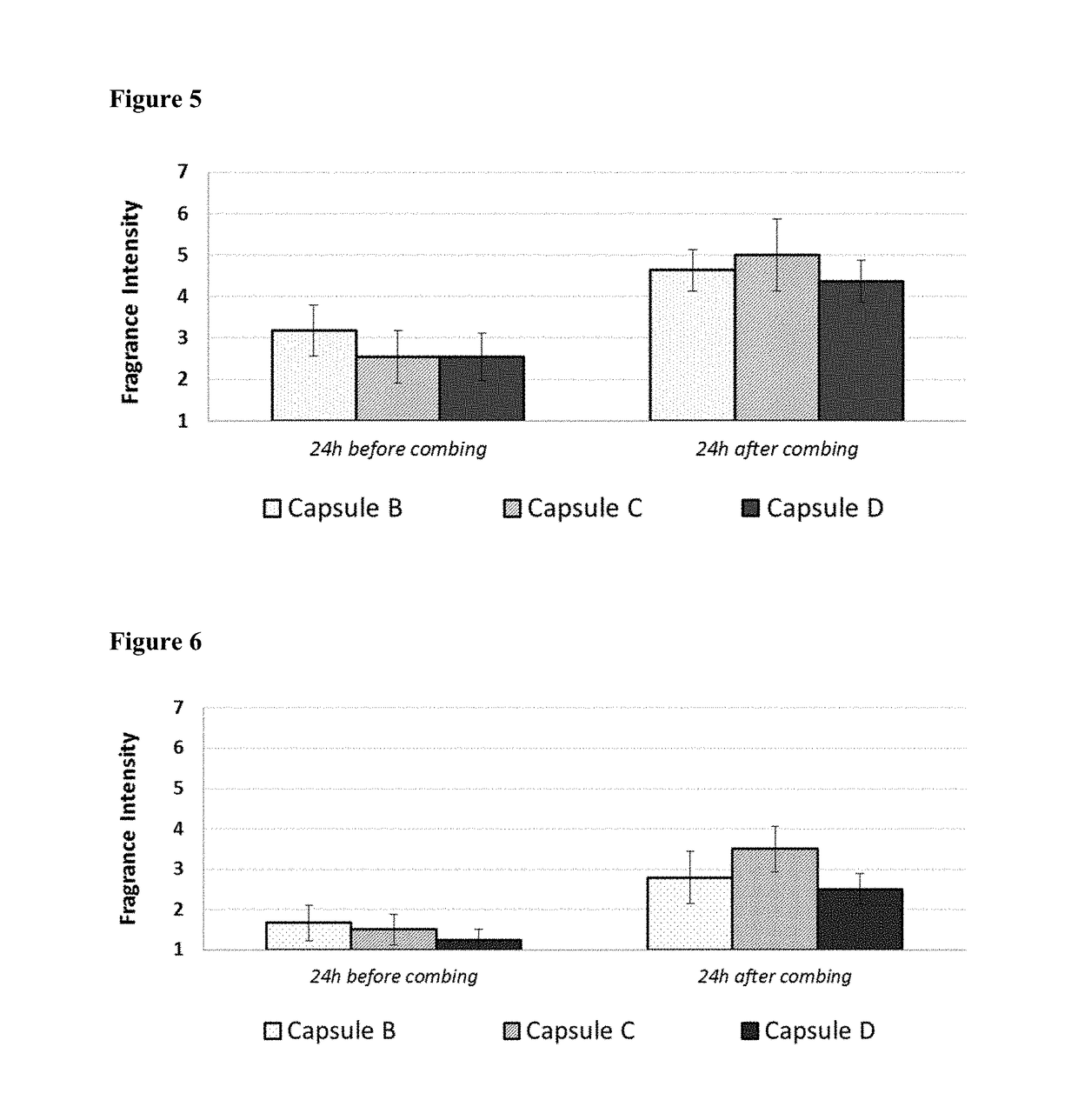Microcapsules with high deposition on surfaces
a microcapsule and surface technology, applied in the field of microcapsules, can solve the problems of reducing affecting the olfactive effect provided by odoriferous compounds, and affecting the effect of perfume retention ability, so as to improve the percentage of deposition of microcapsules on the substrate, and the effect of boosting the deposition property
- Summary
- Abstract
- Description
- Claims
- Application Information
AI Technical Summary
Benefits of technology
Problems solved by technology
Method used
Image
Examples
example 1
Preparation of Polyurea-Based Capsules According to the Invention (A)
[0155]
TABLE 1Composition of capsules A according to the inventionIngredientPercentagePerfume Oil 1)27.9Uvinul A Plus 2)1.5Takenate ® D-110N 3)3.7Guanazole1.1Water38.4Gum Arabic0.73 wt % Cationic Polymer Solution4)26.71)Perfuming composition described in Table 2.2)Tracer for the quantification of oil deposition3)trimethylol propane adduct of xylylene diisocyanate; origin: Mitsui Chemicals, 75% polyisocyanate / 25% ethyl acetate4) Salcare ® SC60 (acrylamidopropyltrimonium chloride / acrylamide copolymer; origin BASF)
TABLE 2Perfume oil compositionIngredientPartsIsopropyl myristate0.3(2)-3-hexen-1-ol butyrate0.6Delta damascone1.02,4-Dimethyl-3-cyclohexene-1.01-carbaldehydeHabanolide ®1)3.0Hedione ®2)5.0Hexyl cinnamic aldehyde12.0Iso E Super ®3)16.0Verdyl acetate24.0Lilial ®4)37.01) Trademark from Firmenich; pentadecenolide, origin: Firmenich SA, Geneva, Switzerland2) Trademark from Firmenich; Methyl-cis-3-oxo-2-pentyl-1-c...
example 2
Preparation of Polyurea-Based Capsules According to the Invention (B)
[0158]Similar protocol as described in Example 1 was applied to prepare microcapsules with a composition as reported in Table 3 below. Guanidine carbonate was used as reactant.
TABLE 3Composition of capsules BIngredientPercentagePerfume Oil 1)27.9Uvinul A Plus 2)1.5Takenate ® D-110N 3)3.7Guanidine Carbonate0.5Water39Gum Arabic0.73 wt % Polymer Solution 4)26.71) Perfuming composition from Table 22) tracer for the quantification of oil deposition3) trimethylol propane adduct of xylylene diisocyanate; origin: Mitsui Chemicals, 75% polyisocyanate / 25% ethyl acetate4) Salcare ® SC60 (acrylamidopropyltrimonium chloride / acrylamide copolymer; origin BASF)
example 3
Preparation of Polyurea-Based Capsules According to the Invention (C)
[0159]Similar protocol as described in Example 1 was applied to prepare microcapsules with a composition as reported in Table 4 below. Interfacial polymerization happened in absence of a reactant. DABCO (catalyst) was added before heating the emulsion.
TABLE 4Composition of capsules CIngredientPercentagePerfume Oil 1)27.9Uvinul A Plus 2)1.5Takenate ® D-110N 3)3.7DABCO0.07Water39.4Gum Arabic0.73 wt % Cationic Polymer Solution 4)26.71) Perfuming composition from Table 22) tracer for the quantification of oil deposition3) trimethylol propane adduct of xylylene diisocyanate; origin: Mitsui Chemicals, 75% polyisocyanate / 25% ethyl acetate4) Salcare ® SC60 (acrylamidopropyltrimonium chloride / acrylamide copolymer; origin BASF)
PUM
| Property | Measurement | Unit |
|---|---|---|
| droplet size | aaaaa | aaaaa |
| droplet size | aaaaa | aaaaa |
| droplet size | aaaaa | aaaaa |
Abstract
Description
Claims
Application Information
 Login to View More
Login to View More - R&D
- Intellectual Property
- Life Sciences
- Materials
- Tech Scout
- Unparalleled Data Quality
- Higher Quality Content
- 60% Fewer Hallucinations
Browse by: Latest US Patents, China's latest patents, Technical Efficacy Thesaurus, Application Domain, Technology Topic, Popular Technical Reports.
© 2025 PatSnap. All rights reserved.Legal|Privacy policy|Modern Slavery Act Transparency Statement|Sitemap|About US| Contact US: help@patsnap.com



